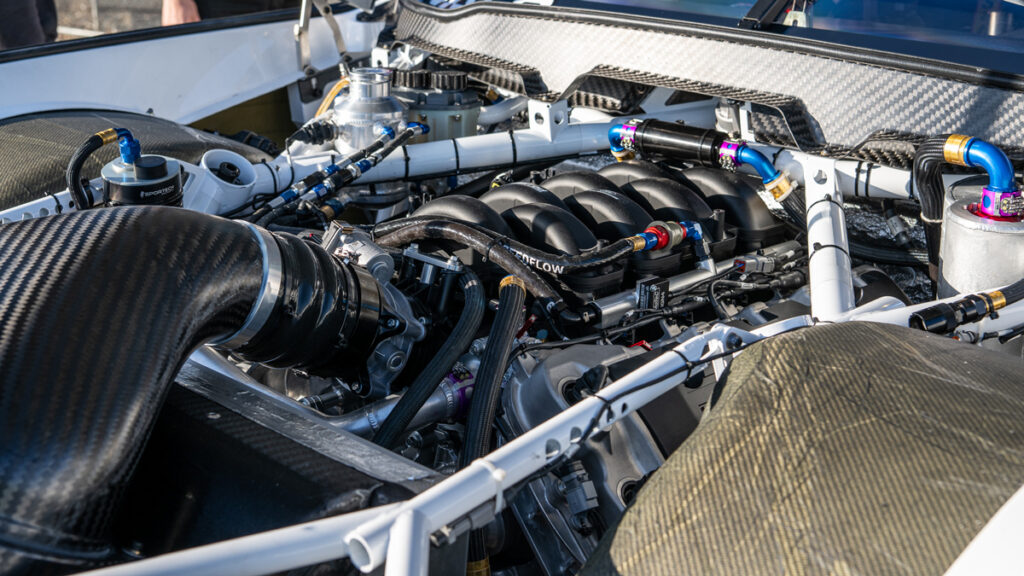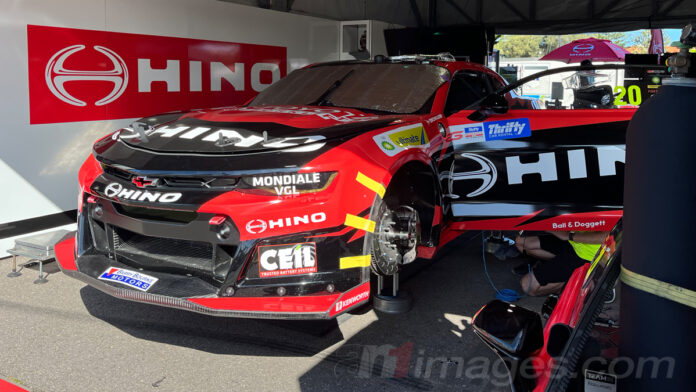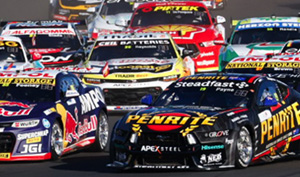FORD’S global racing boss Mark Rushbrook believes Supercars has achieved “clear aero parity” with its Gen3 cars but is taking a wait and see approach on engine performance.
Supercars undertook a second round of straightline testing at the Temora Aerodrome last week following concerns from Ford about November’s initial VCAT running.
Ford argued that the aerodynamic balance of its Mustang was more forward-biased than that of the Chevrolet Camaro, potentially hurting the Blue Oval machines over race runs.
The second test resulted in small additions to the leading edge of the front wheel arches on the Chevrolets (pictured above), moving their aero balance forward and adding drag.
A straightline speed discrepancy had been Ford’s other grievance and has also resulted in mapping revisions to both the 5.7-litre, pushrod Chevrolet and 5.4-litre, double overhead cam Ford engines.
Rushbrook was outspoken about Ford’s concerns last month and responded to the changes at the Newcastle circuit ahead of opening practice on Friday.
“The amount of work and effort that has gone into this is significant and I think it’s important we launch this series, the start of racing, in the right way,” he said.
“When we looked at aero, the testing that had been done, there were certainly some questions that came out of November.
“It was very good that the series, with all of the stakeholders in agreement, agreed to go back and do extra robustness testing and to get to where we are now and I think very clear aero parity.
“On the powertrain side, engine and acceleration we knew at the beginning with different engine architectures that it was going to be a challenge.

“Instead of two pushrod engines with the same displacement, they have different displacements and technology.
“You can always meet on a dyno… but how they perform in the car can be different.
“So while there is equivalence certainly on the dyno, that manifests itself differently in the car so some adjustments have been made in the calibrations that are in the cars to account for that and we’ll see how it works this weekend.
“But I think everyone is going into it with the right mindset that we’ll see how it works this weekend and certainly if further adjustments need to be made, then they can be.
“There is a process for that which will be driven through data, and transparent and collaborative.”
Rushbrook said the Ford’s mapping was again tweaked following the Temora test, but the key changes were implemented before track running at Sydney Motorsport Park last month.
“There were some small calibration differences that were done to address some idle issues which wouldn’t affect performance,” he said.
“The performance element of it was the same as what had been run on track in Sydney, and then some small adjustments to address the acceleration differences.”
Camaros swept the top eight places at the Sydney test, leading to accusations that Ford teams were sandbagging as part of a concerted effort to push Supercars to take action on parity.
The test however was far from a controlled environment, with various tyre compounds in use and a minimum weight for the category not yet locked in. A minimum weight of 1335kg was subsequently confirmed.
Rushbrook’s comments on the aero and engine tweaks came on the same day that Jamie Whincup, the team principal for Chevrolet’s homologation squad Triple Eight, slammed Ford’s parity push.




